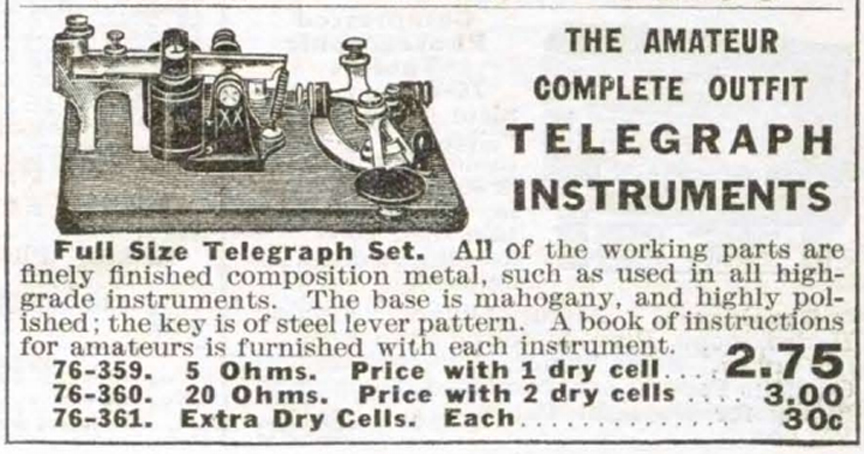United States
Morse Code Message on 1911 Post Card from
East Orange, N.J. to Dartmouth, N.S.

Morse Code Message on Post Card from East Orange, N.J. to Dartmouth, N.S. postmarked March 13, 1911

Post Card Depicting Brooklyn and Manhattan Bridges circa 1911
On March 14, 1911, L. Stone mailed a post card depicting the Manhattan and Brooklyn bridges in New York City to William Stone in Dartmouth, N.S. According the 1911 Canadian census there was one William Stone, a sixteen year old boy, living in Dartmouth, N.S. at this time. The 1910 U.S. census identifies two women in their thirties in East Orange who could be L. Stone. Of course L. Stone may well have been a visitor or a resident of an adjacent community who mailed the post card in East Orange. Is she a much older sister? An aunt? A cousin? A sister-in-law? Maybe the content of the message could clarify the relationship.
After the date (March 12, 1911), the message begins, "Dear Billy." It then shifts to morse code with the message, "why don't you write to me love to everybody." Reverting to uncoded text it asks, "are you still studying [?]" It then offers a coded "kiss" explaining in plain text, "for you." The message is signed "L. Stone." Unfortunately, the message does not definitively clarify the relationship.

John Murray's 1905 Publication A Story of the Telegraph
The message does reflect the popular interest in codes and telegraphy reflected in publications such as John Murray's 1905 publication A Story of the Telegraph which articulates contemporary excitement about the invention:
In commercial life the telegraph has revolutionized business methods. Transactions are now effected between New York, London and other financial centres in minutes, which formerly occupied weeks, and even months, to accomplish. In social life the advantages of telegraph communication are equally apparent; travel where we may, we are always within reach of friends or kindred at a distance by means of the telegraph wires.
The daily Press is now enabled to record the moving accidents on flood and field in all parts of the world, a few hours or even minutes after their occurrence.
The popular interest in telegraphy was also evident in the sale of amateur telegraphy sets and signal lamps in mail order catalogues and newspapers. In her nineties, my mother, a housewife who grew up in the 1930's and 1940's, can still remember fragments of morse code learned in her youth.

Amateur Telegraphy Equipment from the Eaton's Spring and Summer 1916 Catalogue

Signal Lamp Sold as a Promotion in the Fredericksburg The Free Lance-Star on May 1, 1933
Bibliography
"The Amateur Complete Outfit Telegraph Instruments." Eaton's Spring and Summer 1916 catalogue. 1916: 281.
"Boys Becoming Wireless Experts; Learn Morse International Code." The Free Lance-Star. 1 May 1933: 3.
"Help Deciphering Coded Message on Postcard." Stampboards.com. 30 Nov. 2018. Web. 3 Dec. 2018
https://www.stampboards.com/viewtopic.php?f=10&t=84599.
Murray, John. A Story of the Telegraph. Montreal: JOHN LOVELL & SON, 1905.
Direct comments, questions and corrections to:
stampquestions@hotmail.com
© Grose Educational Media, 2018